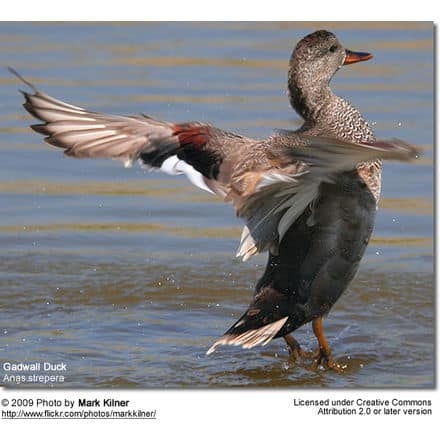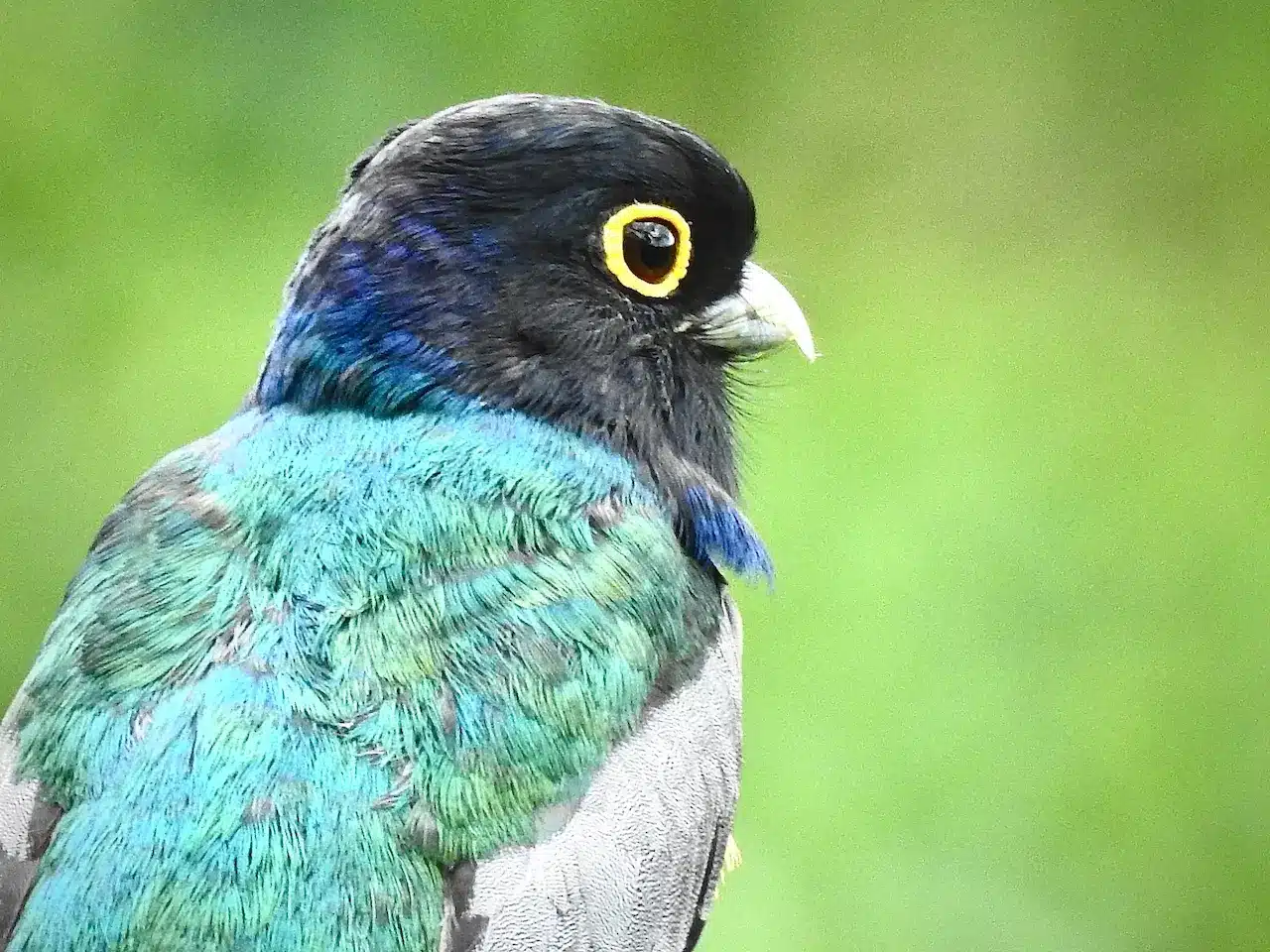Gorgeted Sunangels
Hummingbird Information
The Gorgeted Sunangels (Heliangelus strophianus) are South American hummingbirds that are part of the Sunangel family.
Distribution / Habitat
Gorgeted Sunangels occur naturally in southwestern Colombia (Nariño) and northwestern Ecuador – at elevations from 4,000 – 10,000 feet (~1,200 – 2,800 meters).
They are usually found in damp, bushy ravines in humid and wet pre-montane forests, shrubby edges, and thickets. These hummingbirds typically forage alone low in covered areas. They rarely occur in open areas.
Description
Gorgeted Sunangels measure 3.7 inches (9.4) in length, and have a straight, short bill that is between 0.6 – 0.73 inches (1.5 – 1.8 cm) long.
Both genders have a broad white or buffy white crescent across the chest. The feathers on the forehead grow over the base of the bill covering the nostrils (which are exposed in the similar Amethyst-throated Hummingbird).
Adult male: The plumage is mostly iridescent green, except for the bright pinkish / rose-colored throat patch (gorget) – which may appear darker in poor light conditions or at certain angles, a bluish-green frontlet above the beak and the white crescent below the gorget. They are identical to male Amethyst-throated Sunangels, except for a broader green chest belt. The abdomen is greyish buff (not grey as in the Amethyst-throated male). The tail is longer and dark-steel blue in color (rather than bronze green).
Adult Female: Looks identical to the Amethyst-throated female, except the tail is dark blue instead of bronzy green, and the throat shows traces of white.
Similar Species
- Even though they very much resemble the Amethyst-throated Sunangels, the Gorgeted Sunangels are found further north in South America. Therefore, confusion is unlikely.The smaller Purple-throated Woodstar has chestnut sides and belly bands, and a white flank patches. The male Purple-throated Woodstar has a white throat. Both males and females have white chest bands.
Diet / Feeding
The Gorgeted Sunangels primarily feed on nectar taken from a variety of brightly colored, scented small flowers of trees, herbs, shrubs and epiphytes. They favor flowers with the highest sugar content (often red-colored and tubular-shaped) and seek out, and aggressively protect, those areas containing flowers with high energy nectar. They use their long, extendible, straw-like tongues to retrieve the nectar while hovering with their tails cocked upward as they are licking at the nectar up to 13 times per second. Sometimes they may be seen hanging on the flower while feeding.
Many native and cultivated plants on whose flowers these birds feed heavily rely on them for pollination. The mostly tubular-shaped flowers actually exclude most bees and butterflies from feeding on them and, subsequently, from pollinating the plants.
They may also visit local hummingbird feeders for some sugar water, or drink out of bird baths or water fountains where they will either hover and sip water as it runs over the edge; or they will perch on the edge and drink – like all the other birds; however, they only remain still for a short moment.
They also take some small spiders and insects – important sources of protein particularly needed during the breeding season to ensure the proper development of their young. Insects are often caught in flight (hawking); snatched off leaves or branches, or are taken from spider webs. A nesting female can capture up to 2,000 insects a day.
Males establish feeding territories, where they aggressively chase away other males as well as large insects – such as bumblebees and hawk moths – that want to feed in their territory. They use aerial flights and intimidating displays to defend their territories.
Metabolism and Survival and Flight Adaptions – Amazing Facts
Breeding / Nesting
Hummingbirds are solitary in all aspects of life other than breeding; and the male’s only involvement in the reproductive process is the actual mating with the female. They neither live nor migrate in flocks; and there is no pair bond for this species. Males court females by flying in a u-shaped pattern in front of them. He will separate from the female immediately after copulation. One male may mate with several females. In all likelihood, the female will also mate with several males. The males do not participate in choosing the nest location, building the nest or raising the chicks.
The female is responsible for building the cup-shaped nest out of plant fibers woven together and green moss on the outside for camouflage in a protected location in a shrub, bush or tree. She lines the nest with soft plant fibers, animal hair and feather down, and strengthens the structure with spider webbing and other sticky material, giving it an elastic quality to allow it to stretch to double its size as the chicks grow and need more room. The nest is typically found on a low, skinny horizontal branch.
The average clutch consists of two to three white eggs, which she incubates alone, while the male defends his territory and the flowers he feeds on. The young are born blind, immobile and without any down.
The female alone protects and feeds the chicks with regurgitated food (mostly partially-digested insects since nectar is an insufficient source of protein for the growing chicks). The female pushes the food down the chicks’ throats with her long bill directly into their stomachs.
As is the case with other hummingbird species, the chicks are brooded only the first week or two, and left alone even on cooler nights after about 12 days – probably due to the small nest size. The chicks leave the nest when they are about 20 days old.
Calls / Vocalizations / Sounds
Alternate (Global) Names
Chinese: ??? … Czech: Kolibrík belolímcový, kolib?ík b?lolímcový … Danish: Kravesolalf … Dutch: Gekraagde Zonnekolibrie … Finnish: Ecuadorinenkelikolibri … French: Ange-du-soleil à queue d’acier, Héliange à queue bleue … German: Graubauchnymphe, Kragensonnennymphe, Kragen-Sonnennymphe, Weißband-Sonnennymphe … Italian: Angelo del sole gola ornata, Eliangelo dalla gorgiera … Japanese: biroadotenshihachidori, biro-dotenshihachidori … Norwegian: Blåhalesolengel … Polish: lordzik ekwadorski … Russian: ?????????? ????? … Slovak: nymfárik kolohrivý … Spanish: Angel del Sol Gargantudo, Ángel Nariñense, Colibrí Pectora …Swedish: Kragsolängel
Species Research by Sibylle Johnson
Overview … Alternate (Global) Names
Description … Calls / Vocalizations
Breeding / Nesting … Diet / Feeding
Please Note: The articles or images on this page are the sole property of the authors or photographers. Please contact them directly with respect to any copyright or licensing questions. Thank you.





